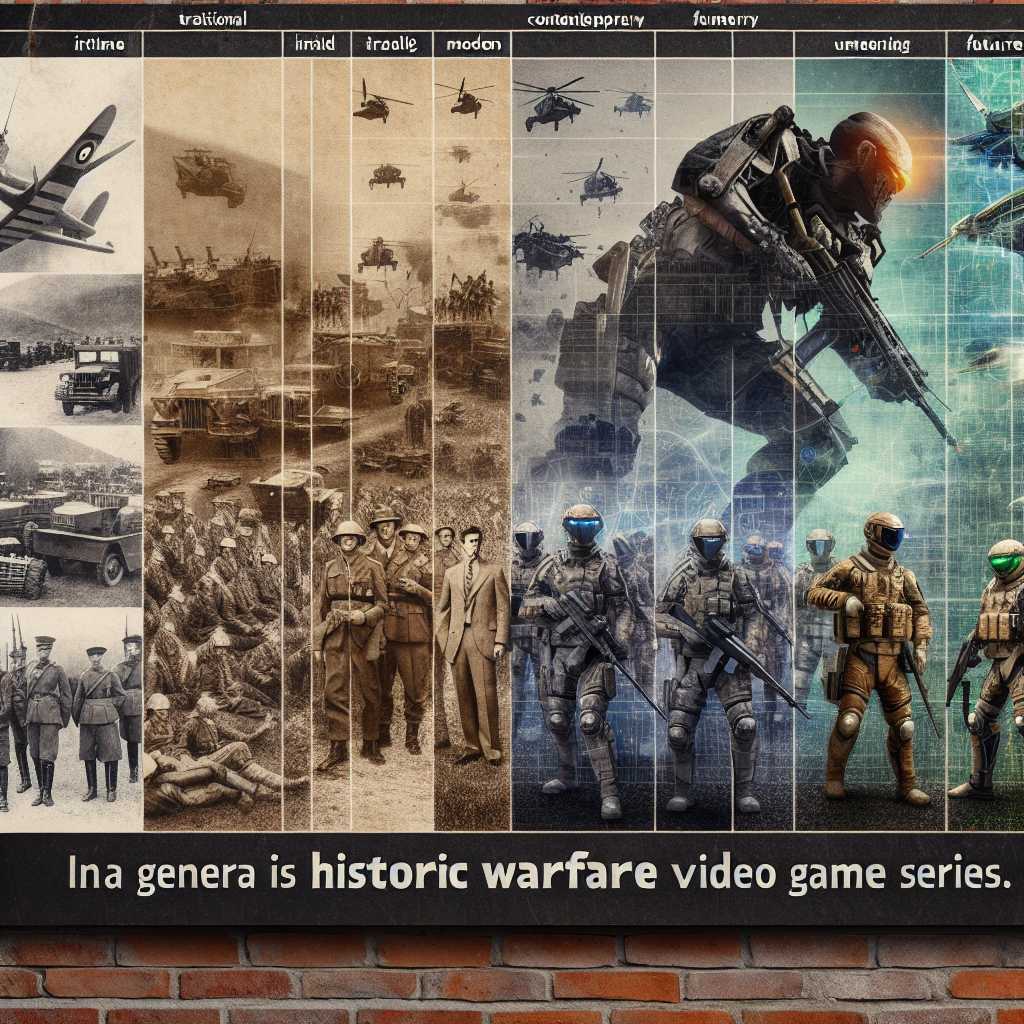Understanding Call of Duty: A Comprehensive Overview
Call of Duty is a franchise that has transcended the boundaries of ordinary video games, evolving into a cultural phenomenon. Since its inception, the series has reinvented the first-person shooter genre with its gripping campaigns, competitive multiplayer and, more recently, exciting battle royale experiences.
The Inception and Evolution of Call of Duty
The Call of Duty franchise began in 2003 with the release of its first title, which was set in World War II. Initially developed by Infinity Ward and published by Activision, this inaugural title focused on simulating the infantry and combined arms warfare of World War II, setting the standard for the genre’s future.
As the years progressed, the franchise has expanded, with other developers such as Treyarch and Sledgehammer Games contributing to the annual releases. The series ventured from its World War II roots into modern-day settings with “Call of Duty 4: Modern Warfare” in 2007, which revolutionized online multiplayer gaming with its progression system and customizable loadouts.
Following the success of Modern Warfare, the franchise has explored various timelines including the Cold War, futuristic battles, and even space combat. Each installment has aimed to deliver an intense and cinematic experience, whether through single-player campaigns or involving multiplayer modes.
Gameplay Mechanics and Features
Gameplay mechanics in the Call of Duty series are designed to be accessible yet deep. Core elements include shooting mechanics, character movement systems like sprinting and cover, and varied difficulty levels catering to all players from beginners to veterans.
Innovative Multiplayer Design
The development teams behind Call of Duty have not only focused on creating engrossing campaign experiences but have also been pioneers in designing innovative multiplayer modes enjoyed by millions. A key success factor is the progression system where players unlock weapons, perks (special abilities), and equipment as they advance in rank.
The inclusion of game types such as Team Deathmatch, Search & Destroy, and Domination cater to different play styles while Killstreaks (rewards based on consecutive kills) add a strategic layer to each match. With robust clan functionality and competitive leagues, Call of Duty caters not just to casual gamers but also to a dedicated esports community.
Zombies and Co-Operative Modes
Starting with “Call of Duty: World at War,” a new co-operative mode introduced Zombies – a survival horror experience where players fend off waves of undead enemies. This mode became an instant hit thanks to its challenging gameplay, deep lore, and Easter eggs that encouraged collaborative play and puzzle-solving.
Expansion into Battle Royale
“Call of Duty: Warzone” marked the franchise’s venture into the popular battle royale genre. Released in March 2020 as a free-to-play addition to Modern Warfare (2019), Warzone offers a large-scale combat experience where up to 150 players fight to be the last person or team standing. Its integration with the larger Call of Duty ecosystem has further solidified it as a fan-favorite.
Cultural Impact and Media Expansion
Call of Duty has left an indelible mark on entertainment beyond gaming itself. Its realistic graphics, storytelling capabilities, and historical settings have generated discussions about war, ethics, and popular culture’s portrayal of conflict. Notably, stories crafted within its universe have often been praised for their depth, intrigue, and depiction of moral complexities instead of merely glorifying combat.
Economic Success
As one of the highest-grossing video game franchises to date, Call of Duty has generated billions in revenue. This financial success is not only limited to game sales but extends to merchandise, special editions, downloadable content (DLC), season passes, and mobile game adaptations like “Call of Duty: Mobile.”
Challenges and Controversies
Despite its successes, Call of Duty has not been without challenges or controversies. The series has faced criticism for various issues ranging from serialization fatigue due to annual releases to concerns over violent content and depictions of warfare. However, Activision has managed these criticisms by engaging with their audience through customer service, evolving game designs to keep up with changing audience expectations, and addressing concerns directly when necessary.
Notes
Image Description
The image depicts a collage that represents different eras from the Call of Duty series. At the center is artwork from one of the original games showing a World War II setting contrasted with modern combat scenes on one side and sci-fi futuristic soldiers on the other side. In overlaying text or branding reflecting that this is from a video game may also be visible in the image.
